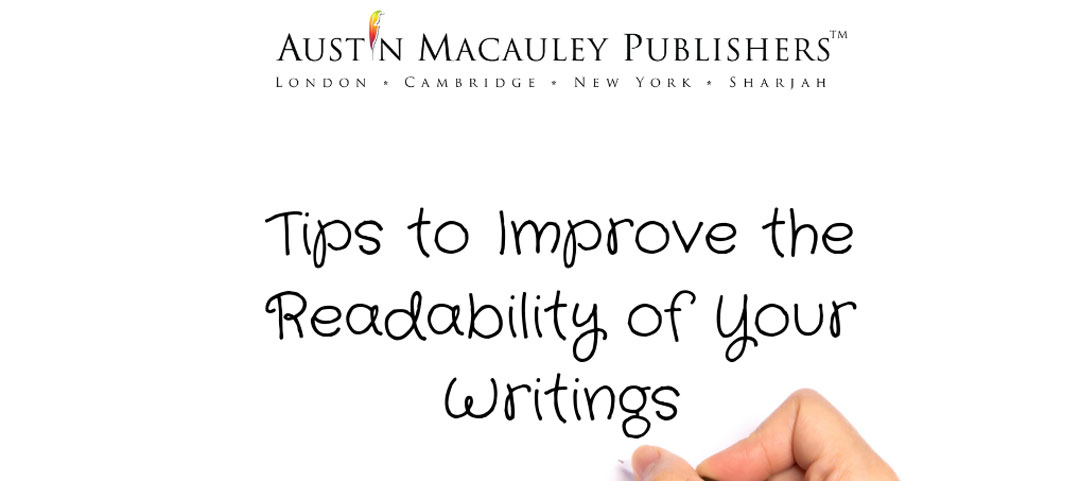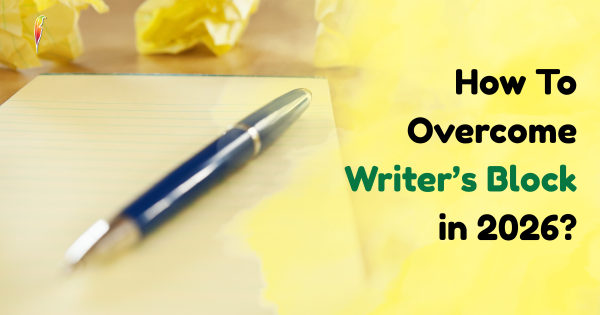
Tips to Improve the Readability of Your Writing
Whether you are writing a book, an article or a blog post, readability is very important. Your writing is a puzzle, and the readers have to solve it to get a complete picture of the story. If your writing contains large sentences, complex language and incomprehensible words, then it will be difficult for the readers to solve.
Here are some handy tips that can help you improve your writing readability:
Readability Tips:
#1. Simple Words: In order to communicate your ideas in the clearest way to use easy words. Try to incorporate words which are short, common and most readers understand. If you have 2 syllable words that convey your message effectively, try not to use a 4 syllable word instead. Use more connective words like ‘initially, primarily, additionally, firstly’ to guide a reader for easy reading.
#2. Concise Sentences: Most readers who read books online just skim through the pages. They do not read complete paragraphs or sentences. In your writings, use short sentences to help readers absorb information quickly. A survey shows that a sentence of 8 words is the easiest to read and as we move on towards longer sentences, readability reduces.
#3. Using Active Voice: writing your book or articles in passive voice can trouble and confuse poor readers. The active voice in your writing will shorten your sentences and make it expressive.
#4. Cut the Jargons: You might be a doctor but not everyone knows what is mitochondria or hypoglycemia. If your audience consists of people other than your profession, replace jargons with explanatory sentences.
#5. Explain Immediately: If you must use difficult words, explain what you mean. Sometimes it is a need to use a difficult word or sentence, but there should be a sentence explaining that word or sentence so you make yourself clear. You can use a bracket or a footnote to define difficult words.
#6: Make a Listicle: Listicles are content presented in form of a list. Readers who read books online are by nature lazy and try to get more information in less time. When there is a list with headings and subheadings, readers find it convenient to just skim through headings.
#7: Shorten Paragraphs: Just like long words and sentences, long paragraphs tend to confuse and frustrate a reader. Try to cut your paragraphs short and separate paragraphs with differing ideas.
#8: Fonts: The font of your writing matters a lot and affects readability. Readers who read books online spend more time looking at their screens. Fancy fonts might look great but are not user-friendly. Try to use fonts such as Times New Roman, Arial, Calibri or Helvetica in your writings, even if you are going to print your work.
#9. Stay on Point: Wandering around and beating about the bush in your book or article can lose the interest of your readers. Instead of going towards preambles, move on to the main point. To improve readability, state the main ideas.
#10. Use Graphics: Using pictures, infographics or charts will make it easy for the readers to engage and absorb the complete information easily. Readers find shortcuts to understand the main idea of your work and attain the summarised information.
#11. Be Organised: organise your writing properly. Form a cluster of the related information and form similar data as a paragraph or a group of interrelated paragraphs. It would be easy for the reader to find the information they need in one place, hence improving the readability. Do not crowd pages with a lot of blocks. Readers like to see white spaces as well.
#12. Flesch Reading Ease Test: Flesch readability test is designed to determine how difficult a passage is to read. The text which has a higher score on the test is easy to read and as the score decreases, it shows that the text is difficult to read. A score of 60-70 is considered acceptable for the web. Conduct the test on your work and check whether your work is easily readable or not.
Better readability means more people which means more earning. Readers who read books online or in physical form are looking for convenience. No matter what type of content you are writing, make it more easily readable to increase audience.
We use cookies on this site to enhance your user experience and for marketing purposes.
By clicking any link on this page you are giving your consent for us to set cookies



